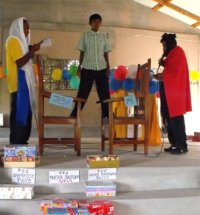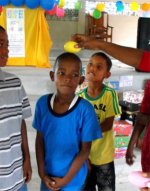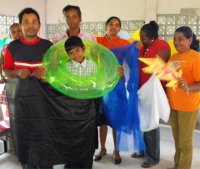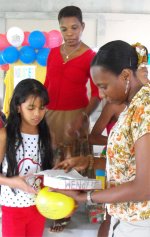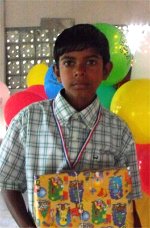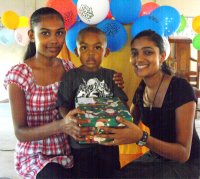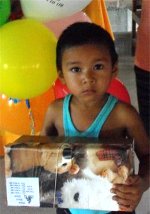
|
|
home >> imagine
me... Compliments of www.wikipedia.org Guyana is officially named the Co-operative Republic of Guyana, and is the only nation state of the Commonwealth of Nations on the mainland of South America. Guyana lies north of the equator, in the tropics, and is located on the Atlantic Ocean.
Guyana is bordered to the east by Suriname, to the south and southwest by Brazil and to the west by Venezuela. It is the third smallest country on the mainland of South America. Culturally it is more associated with the Caribbean than with Latin America and is the only English-speaking country in South America. It is also one of 4 non-Spanish-speaking nations on the continent, along with Brazil (Portuguese), Suriname (Dutch) and French Guiana (French). The Coat of arms of Guyana was granted by Parliament on 25 February 1966.. It includes a crest of an Amerindian head-dress symbolizing the indigenous people of the country, this crest is also called the Cacique's Crown; two diamonds at the sides of the head-dress representing mining industry; a helmet; two jaguars as supporters holding a pick axe, sugar cane, and a stalk of rice; a shield decorated with the Victoria regia lily, Guyana's national flower; three blue wavy lines representing the three main rivers of Guyana; and the national bird, the Canje Pheasant. The national motto, "One people, One Nation, One Destiny", appears on the scroll below the shield. Guyana is an Amerindian word meaning "Land of many waters".[2] The country can be characterized by its vast rain forests dissected by numerous rivers, creeks and waterfalls, notably Kaieteur Falls on the Potaro River. Guyana's tepuis are famous for being the inspiration for Sir Arthur Conan Doyle's 1912 novel The Lost World. The country enjoys a diverse, multicultural society, high floral and faunal biodiversity, prize-winning rum, and Demerara sugar. Guyana is also known internationally for being the site of the notorious Jonestown Massacre. Education Guyana's educational system, which at one time was considered to be among the best in the Caribbean, significantly deteriorated in the 1980s because of the emigration of highly educated citizens and the lack of appropriate funding. Although the education system has recovered somewhat in the 1990s, it still does not produce the quality of educated students necessary for Guyana to modernize its workforce. The country lacks a critical mass of expertise in many of the disciplines and activities on which it depends. The educational system does not sufficiently focus on the training of Guyanese in science and technology, technical and vocational subjects, business management, nor computer sciences. The Guyanese education system is modeled after the former British education system. Students are expected to write SSEE (secondary school entrance exam) by grade 6 for entrance into High School in grade 7. The write CXC at the end of high school. Recently they have introduced the CAPE exams which all other Caribbean countries have now introduced. The A-level system left over from the British era has all but disappeared and is now offered only in a few schools (current as at January 2007). The reason for the insufficient focus or various disciplines can be directly attributed to the common choices made by students to specialize in areas that are similar (math/chemistry/physics or geography/history/economics). With the removal of the old A-level system that encouraged this specialization, it is thought that it will be more attractive[citation needed] for students to broaden their studies. There are wide disparities among the geographical regions of the country in the availability of quality education, and the physical facilities which are provided are in poor condition.[citation needed] Further adding to the problems of the educational system, many of the better-educated professional teachers have emigrated to other countries over the past two decades, mainly because of low pay, lack of opportunities and crime. As a result, there is a lack of trained teachers at every level of Guyana's educational system. There are however several very good Private schools that have sprung
up over the last fifteen years. Those schools offer a varied and
balanced curriculum. Guyana Health: Compared with other neighboring countries, Guyana ranks poorly in regard to basic health indicators. In 1998, life expectancy at birth was estimated at 66.0 years for Guyana, 71.6 for Suriname, 72.9 for Venezuela; 73.8 for Trinidad and Tobago, 74.7 for Jamaica, and 76.5 for Barbados. In Guyana, the infant mortality rate in 1998 was 24.2, in Barbados 14.9; in Trinidad and Tobago 16.2; in Venezuela 22; in Jamaica 24.5; and in Suriname 25.1. < Read about Guyana mlanutrition > Maternal mortality rates in Guyana are also relatively high, being estimate at 124.6/1000 for 1998. Comparable figures for other Caribbean countries are 50/1000 for Barbados, 75/1000 for Trinidad and 100/1000 for Jamaica. It must be emphasized, however, that although Guyana's health profile still falls short in comparison with many of its Caribbean neighbours, there has been remarkable progress since 1988, and the Ministry of Health is constantly upgrading conditions, procedures, and facilities. Open heart surgery is now available in the country, and in the second half of 2007 an ophthalmic center will open.[citation needed] The leading causes of mortality for all age groups are cerebrovascular diseases (11.6%); ischemic heart disease (9.9%); immunity disorders (7.1%); diseases of the respiratory system (6.8%); diseases of pulmonary circulation and other forms of heart disease (6.6%); endocrine and metabolic diseases (5.5%); diseases of other parts of the Digestive System (5.2%); violence (5.1%); certain condition originating in the prenatal period (4.3%); and hypertensive diseases (3.9%). The picture in regard to morbidity patterns differs. The ten leading causes of morbidity for all age groups are, in decreasing order: malaria; acute respiratory infections; symptoms, signs and ill defined or unknown conditions; hypertension; accident and injuries; acute diarrhoeal disease; diabetes mellitus; worm infestation; rheumatic arthritis; and mental and nervous disorders. This morbidity profile indicates that it can be improved substantially through enhanced preventive health care, better education on health issues, more widespread access to potable water and sanitation services, and increased access to basic health care of good quality.
|
|
| Copyright © 2022 www.UnitedCaribbean.com. All rights reserved. Disclaimer Click to Contact us |




